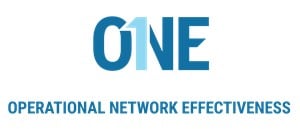We’ve all been there. It’s Friday after work, and your commute is going smoothly. And then it happens. Brake lights, stopped cars, and frustrated drivers as far as the eye can see. You’ve hit a traffic jam. But what caused it? That’s not always easy to figure out. It could be a car accident, or a police officer who has someone pulled over. It could be a foreign object in lanes or road construction. Sometimes, traffic jams occur simply because there are more cars on the road than the road was built to handle. It’s often a combination of several of these causes.
Your industrial network is also susceptible to traffic jams. And just like on the interstate, it’s not always easy to identify what’s causing them. In this installment of our OT Network Effectiveness (ONE) series, Industrial Network Specialist Ted Davis explains the most common causes of industrial network traffic jams, and details how they can be prevented in the future so you spend less time troubleshooting.
The Traffic Jam is a Symptom, Not the Problem
An industrial network traffic jam is typically an indicator that the reliability and scalability of your network are no longer in sync with the process communication needs. Simply put, the process traffic is higher than the bandwidth needed to accommodate the data flow between devices and operators.
Network traffic jams often occur at aggregation points where a parameter or recipe has changed or there’s a design constraint and more data needs to be collected as the product is being produced. This adds data to the flow. But if you haven’t gone back to the network to verify the pipes flowing between devices and switches are large enough to accommodate that increased data flow, you are susceptible to a traffic jam.
Most Common Causes of a Network Traffic Jam
Typically, the Agilix teams looks to four items on a network’s switches to identify if a traffic jam is occurring:
 Dropped Packets
Dropped Packets
Packet loss is simply defined as one or more transmitted packets of data failing to arrive where they were intended to. Packets are small units of data that your network protocol will route between a starting point and an end point on the network. When packets are dropped, often due to network congestion, your end users will experience disruptions like slow or disrupted device performance.
Corrupted Packets
Corrupted packets occur when you have a link that is no longer travelling through a safe conduit. For example, the presence of an EMI can corrupt packets and generate errors. This adds more traffic to the links and creates a traffic jam that will get precipitously worse.
Half Duplex Devices
Half duplex devices are older pieces of technology. Sticking with the traffic jam analogy, half duplex devices are like a single lane road. Only traffic is allowed to flow one way. When traffic attempts to flow both ways, there is a collision. When a new device is introduced to the network, it can also introduce a new process communication need in the process. At the same time, it could reveal the weakness of a half-duplex network device in the process. It’s important to upgrade those devices when this occurs to eliminate the likelihood of having to retransmit a packet.
Outdated Process Logic
As the process evolves with time, some devices get added and deleted. Problems can occur if we don’t update the process logic to reflect the devices that are (and are not) currently on the network. Not doing so can lead to the PLC trying to establish communications with devices that are no longer present. This is called an Address Resolution Protocol (ARP). ARP traffic is an added data flow on an already constrained communication pipe.
These four conditions are the primary indicators and causes of most industrial network traffic jams and they are the first things we look for when performing a process assessment for a client. By assessing these, we’re able to quickly determine how severe the traffic jam is and what the remediation is required to fix the network and better support the needs of the process.
Experiencing Your Own Industrial Network Traffic Jam?



 Dropped Packets
Dropped Packets